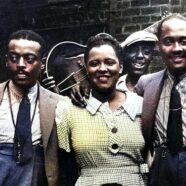Harlem Renaissance Officially Recognized
April 18 in Black History: Momentous Events and Inspiring Figures
African Americans’ rich and diverse history is filled with inspiring stories and groundbreaking events that helped shape the world we live in today. On April 18, we celebrate significant moments and individuals that have left a lasting impact on society. Here, we delve into the events that took place on this day, and the remarkable figures that contributed to the Black community’s progress.
Harlem Renaissance Cultural Explosion
One of the most defining periods in African American history was the Harlem Renaissance, a time of artistic, intellectual, and cultural development that spanned the 1920s and 1930s. On April 18, 1925, the New Negro Movement, also known as the Harlem Renaissance, was officially recognized with the publication of the “Survey Graphic” magazine issue titled “Harlem: Mecca of the New Negro.” This issue showcased the works of prominent Black writers, artists, and thinkers who contributed to the flourishing of Black culture, such as Langston Hughes, Zora Neale Hurston, and Alain Locke.
Birth of a Groundbreaking Chemist
April 18, 1943, marked the birth of Alice Ball, a pioneering African American chemist who developed the first effective treatment for leprosy. Ball’s innovative work in isolating the active ingredient in the chaulmoogra oil led to a significant breakthrough in treating this debilitating disease. The “Ball Method” became the most effective treatment for leprosy until the advent of antibiotics in the 1940s. Ball’s accomplishments were remarkable, especially considering the obstacles she faced as a Black woman in the early 20th century.
Bibliography:
- Locke, Alain, ed. (1925). “Harlem: Mecca of the New Negro.” Survey Graphic. Retrieved from https://www.unz.org/Pub/SurveyGraphic-1925mar/.
- “Alice Ball.” (n.d.). Science History Institute. Retrieved from https://www.sciencehistory.org/historical-profile/alice-ball.











